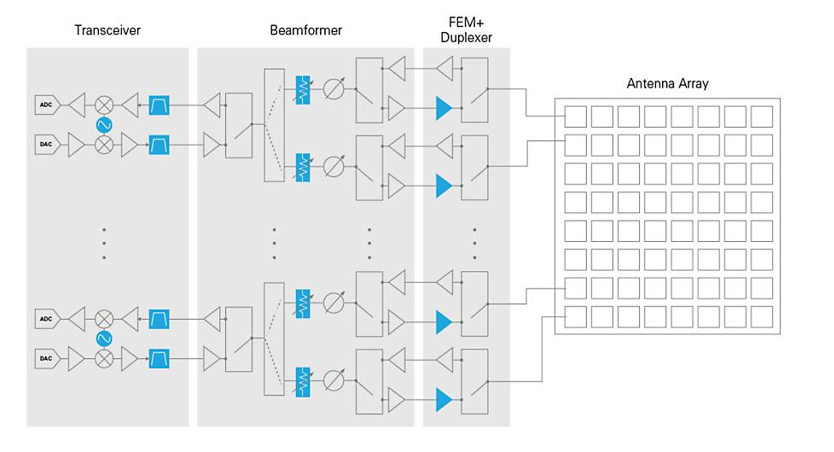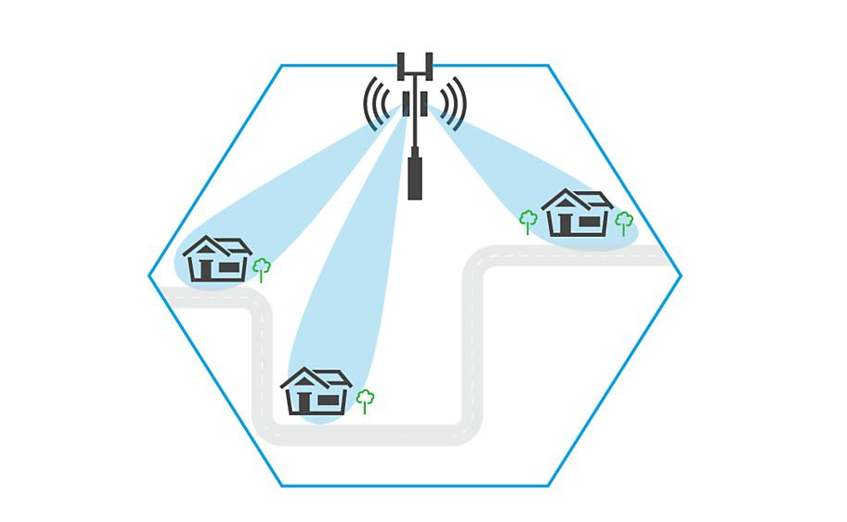5 Challenges of Wideband 5G Device Test
5G New Radio includes two different types of waveforms:
- Cyclic-prefix OFDM (CP-OFDM) for downlink and uplink
- Discrete Fourier transform spread OFDM (DFT-S-OFDM) for uplink only; this waveform resembles LTE's single-carrier frequency division multiple access (SC-FDMA)
Researchers and engineers working on 5G device test have the new challenges of creating, distributing, and generating 5G waveforms among their design and test benches. Engineers need to work with highly complex, standard-compliant uplink and downlink signals that have larger bandwidths than ever before. They include a variety of different resource allocations; modulation and coding sets; demodulation, sounding, and phase-tracking information; and single-carrier and contiguous and non-contiguous carrier-aggregated configurations.
Design tip: Select a 5G standard-compliant toolset that allows you to generate, analyze, and share these waveforms between test benches to fully characterize your DUTs.
 2. Instruments Must Be Wideband and Linear, and They Must Cost-effectively Cover an Extensive Frequency Range
2. Instruments Must Be Wideband and Linear, and They Must Cost-effectively Cover an Extensive Frequency Range Although RF engineers have been working with specialized and expensive test systems for mmWave in industries such as aerospace and military, this represents unexplored territory for the mass-market semiconductor industry. Engineers need cost-effective test equipment to configure more test benches for a shorter time to market. These new benches must support high linearity; tight amplitude and phase accuracy over large bandwidths; low phase noise; extensive frequency coverage for multiband devices; and the ability to test for coexistence with other wireless standards. Along with powerful hardware, modular, software-based test and measurement benches will be able to adapt rapidly to new test requirements.
Design tip: Invest in a wideband test platform that can evaluate performance in both existing and new frequency bands. Select instrumentation that not only supports coexistence with current standards but also adapts to the evolution of the standard over time.
 3. Component Characterization and Validation Require More Testing
3. Component Characterization and Validation Require More Testing Working with wide signals below 6 GHz and at mmWave frequencies requires characterizing and validating greater performance out of RF communications components. Engineers must not only test innovative designs for multiband power amplifiers, low-noise amplifiers, duplexers, mixers, and filters, but also ensure that new and improved RF signal chains support simultaneous operation of 4G and 5G technologies. Additionally, to overcome significant propagation losses, mmWave 5G requires beamforming subsystems and antenna arrays, which demand fast and reliable multiport test solutions.
Design tip: Ensure your test systems can handle both multiband and multichannel 5G devices to address beamformers, FEMs, and transceivers.
 4. Over-the-air Testing of Massive MIMO and Beamforming Systems Makes Traditional Measurements Spatially Dependent
4. Over-the-air Testing of Massive MIMO and Beamforming Systems Makes Traditional Measurements Spatially Dependent Engineers working on 5G beamforming devices face the challenge of characterizing the transmit and receive paths and improving the reciprocity for TX and RX. For example, as the transmit power amplifier goes into compression, it introduces amplitude, phase shifts, and other thermal effects that the LNA in the receiver path would not produce. Additionally, the tolerances of phase shifters, variable attenuators, gain control amplifiers, and other devices could cause unequal phase shifts between channels, which affects the anticipated beam patterns. Measuring these effects requires over-the-air (OTA) test procedures that make traditional measurements like TxP, EVM, ACLR, and sensitivity spatially dependent.
Design tip: Use OTA test techniques that synchronize fast and precise motion control and RF measurements to more accurately characterize 5G beamforming systems without exceeding your test time budget.
 5. High-volume Production Test Demands Fast and Efficient Scaling
5. High-volume Production Test Demands Fast and Efficient Scaling New 5G applications and industry verticals will exponentially increase the number of 5G components and devices that manufacturers need to produce per year. Manufacturers are challenged by the need to provide quick ways to calibrate the multiple RF paths and antenna configurations of new devices and accelerate the OTA solutions for reliable and repeatable manufacturing test results. However, for volume production of RFICs, traditional RF chambers can take up much of the production floor space, disrupt material handling flows, and multiply capital expenses. To tackle these problems, OTA-capable IC sockets-small RF enclosures with an integrated antenna-are now commercially available. These provide semiconductor OTA test functionality in a reduced form factor.
Design tip: Select an ATE platform that extends lab-grade 5G instrumentation to the production floor to simplify the correlation of characterization and production test data.
Technical White Paper Engineer's Guide to 5G Semiconductor TestWideband 5G IC test is complex. The Engineer's Guide to 5G Semiconductor Test is here to help. A must-read for anyone navigating the time, cost, and quality trade-offs of sub-6 GHz and mmWave IC test, the guide features color diagrams, recommended test procedures, and tips for avoiding common mistakes.
Topics include:
- Working with wide 5G downlink and uplink OFDM waveforms
- Configuring wideband test benches for extensive frequency coverage
- Avoiding common sources of error in 5G beamforming
- Reducing test times of over-the-air TX and RX test procedures
- Choosing alternatives to RF chambers for high-volume production of mmWave RFICs
Download the Engineer's Guide to 5G Semiconductor Test